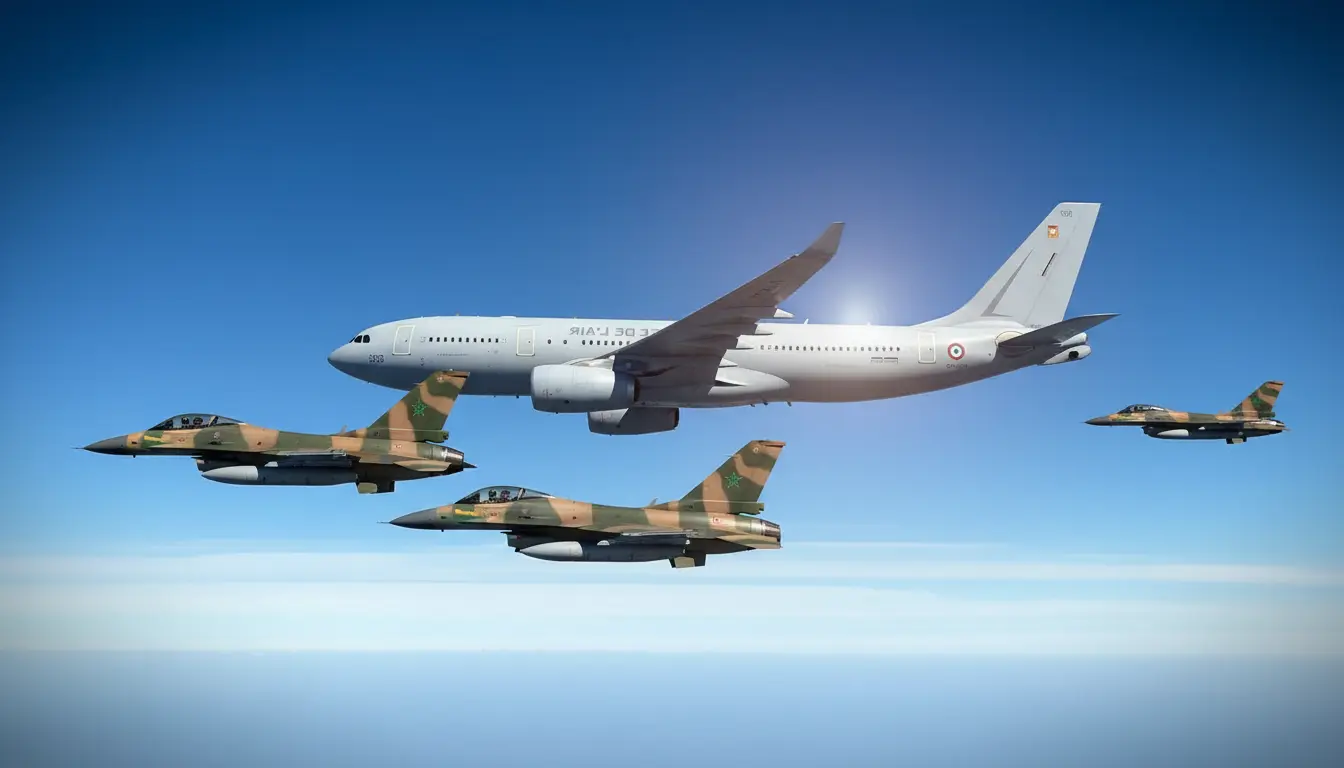Intercept at Altitude: A Calm Show of Force
A single aircraft blips on the radar—just enough to trigger the response. Moroccan F-16s launch without delay, streaking directly towards the marked plane, locking eyes (well, sensors) on their target, closing in smoothly and controlled, with not a hint of aggression. Inside the cockpit, voices remain calm, focused—just another day at the (very high) office. Ahead: an A330 MRTT ‘Phénix’ flanked by two Rafale B fighters. Everyone knows the rules, but no one lets their guard down.
Air traffic control issues a crystal-clear reminder of the protocols. The message comes through, no sugar-coating: return to international airspace, or face an armed response. This isn’t about posturing. It’s about discipline—a no-nonsense exchange that’s anything but a game. That’s the crux of Marathon 25: every crew plays their part to the fullest, right until the end. Identification is confirmed, the disengagement is clean, and orders are followed to the letter. No improv, no cutting corners.
Intensity You Can Feel—Even in Simulation
This moment, when everything seems almost second nature, shows just how deeply cooperation runs. That interception could very well have been real. It wasn’t, but the intensity? It’s genuine, no pretending. The Airbus, the centerpiece of the whole setup, turns into both the tactical target and the anchor of the simulation.
But Marathon 25 is far from just an interception drill. It pushes every team to their limits, testing both endurance and those hard-earned reflexes. Picture it: five French Rafale B jets, eight Moroccan F-16s, all taking turns to practice aerial refueling with the MRTT Phénix. For Moroccan pilots used to the Hercules, this plane changes the whole picture. Here, precision means millimeters. There’s zero margin for error.
Refueling: Choreography in the Clouds
The approaches come one after another. Every time a pilot meets the refueling pod, it’s all about calm hands, a steady grip, and nerves of steel. One miscalculation and the entire maneuver starts over. Yet through all of this, the radios are crisp, and the handoffs run almost like reading from sheet music. Behind the cockpit glass, glances are exchanged—brief, efficient, without a single wasted word.
The Airbus sets the tempo. It provides the range, stabilizes the rhythm, and imposes a structure on the operation. With each successful pass, the value of training at this level is reaffirmed, sharpening everyone involved. Marathon 25 sends a clear message: endurance alone isn’t enough. Control, composure, and flawless coordination are just as crucial.
More Than Machines: Trust Forged in the Air
Exercises like this don’t happen by chance. They’re grounded in years of work—sometimes quietly, sometimes under pressure. The relationship between France and Morocco isn’t always straightforward. But up there in the sky, crews aren’t debating diplomacy. They fly. They get the job done. They protect. The goal is shared: maintain mastery, learn to operate as a team, make every movement sharper than the last.
The upcoming live-fire phase, on Moroccan soil, will demand even more: tighter precision, stricter discipline. But the groundwork is there. Marathon 25 isn’t just for show—it’s a dress rehearsal for the day when the call is real, when every minute really counts and the alarm isn’t just another drill.
Radio discipline, identification protocols, rules of engagement—everything is honed down to the bone. There’s zero room for sloppiness. And yet, behind that rigor, there’s also trust. The kind that’s built in the cockpit, not around a conference table.
What Marathon 25 reveals is that modern defense rests as much on the machines as on the people. And when people know what they’re doing—when they speak the same operational language—it changes everything.

John is a curious mind who loves to write about diverse topics. Passionate about sharing his thoughts and perspectives, he enjoys sparking conversations and encouraging discovery. For him, every subject is an invitation to discuss and learn.






